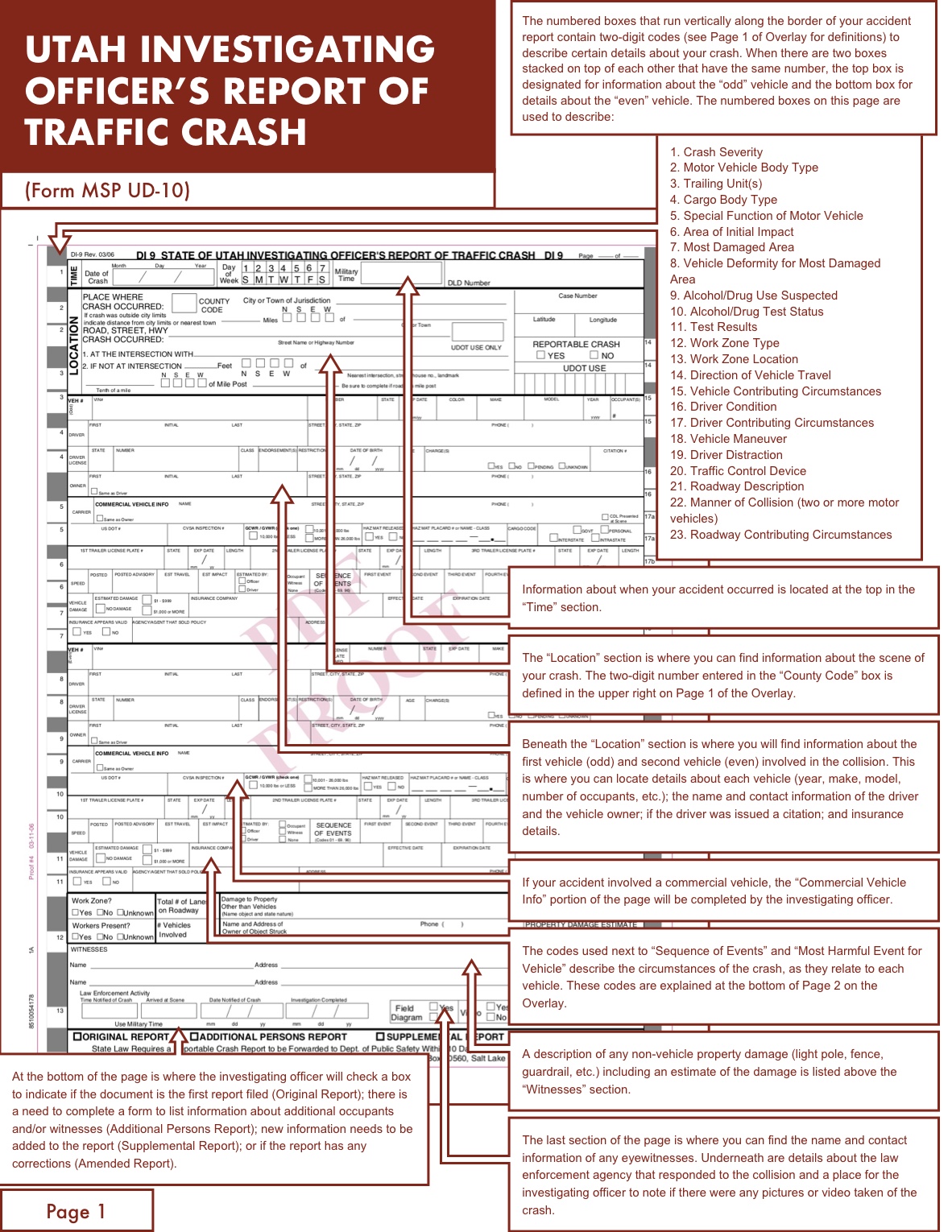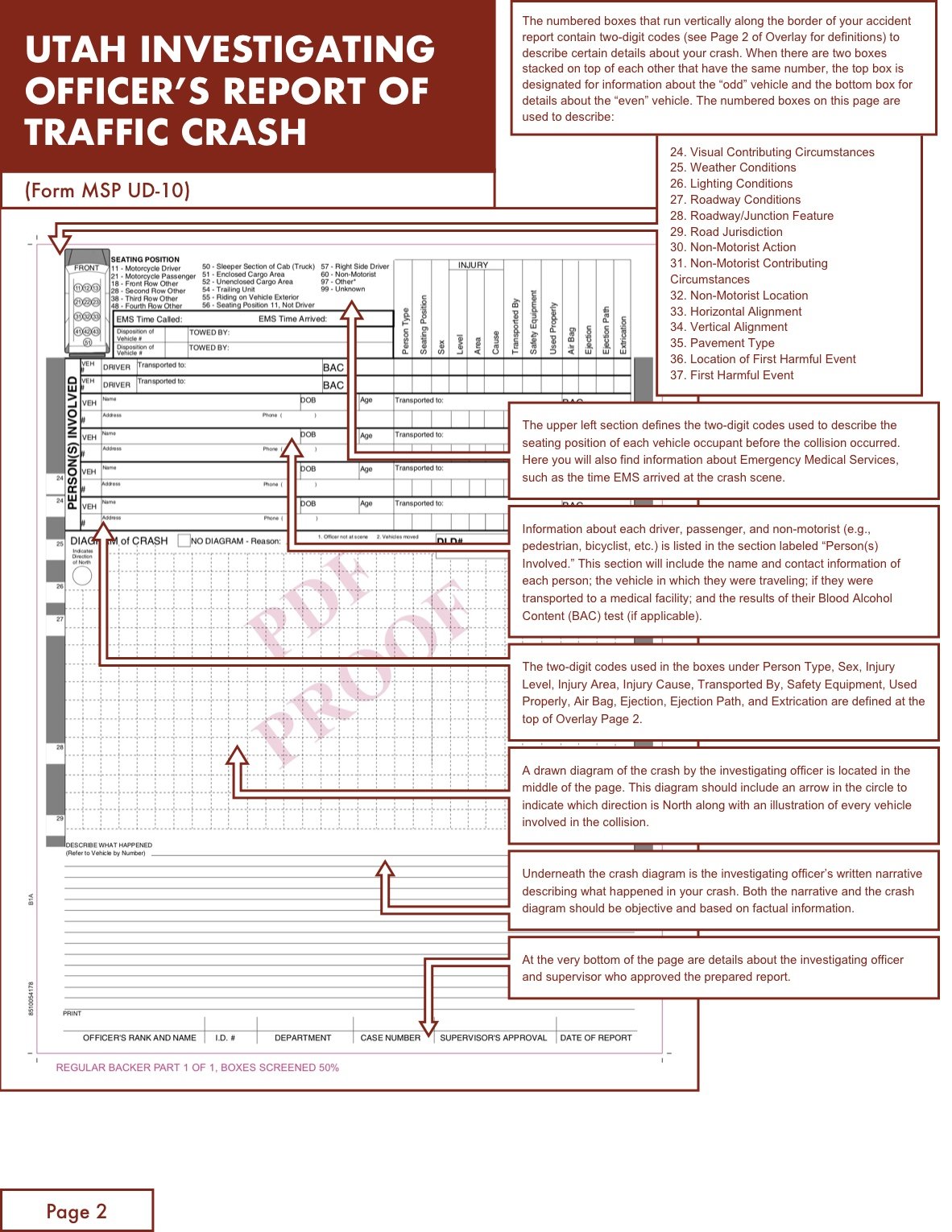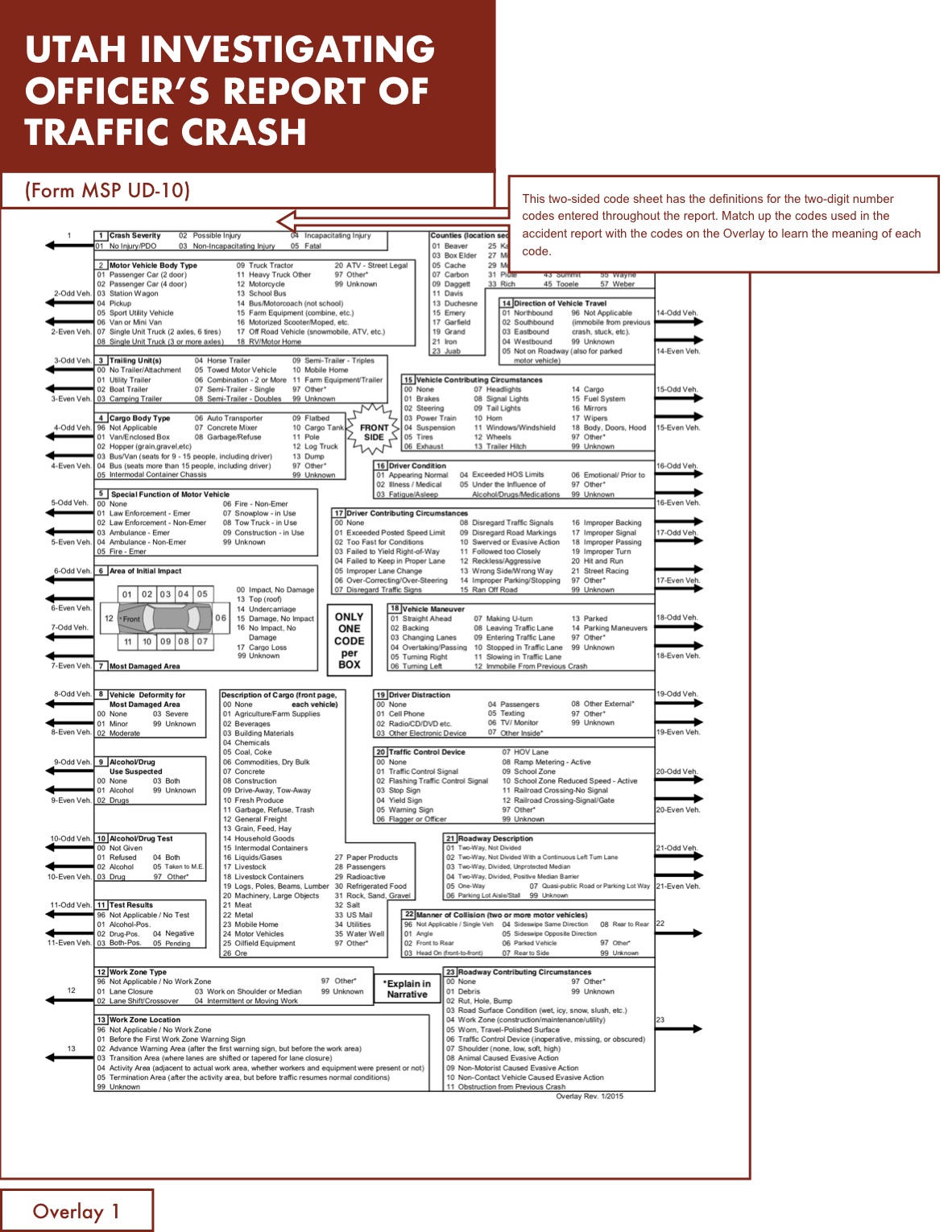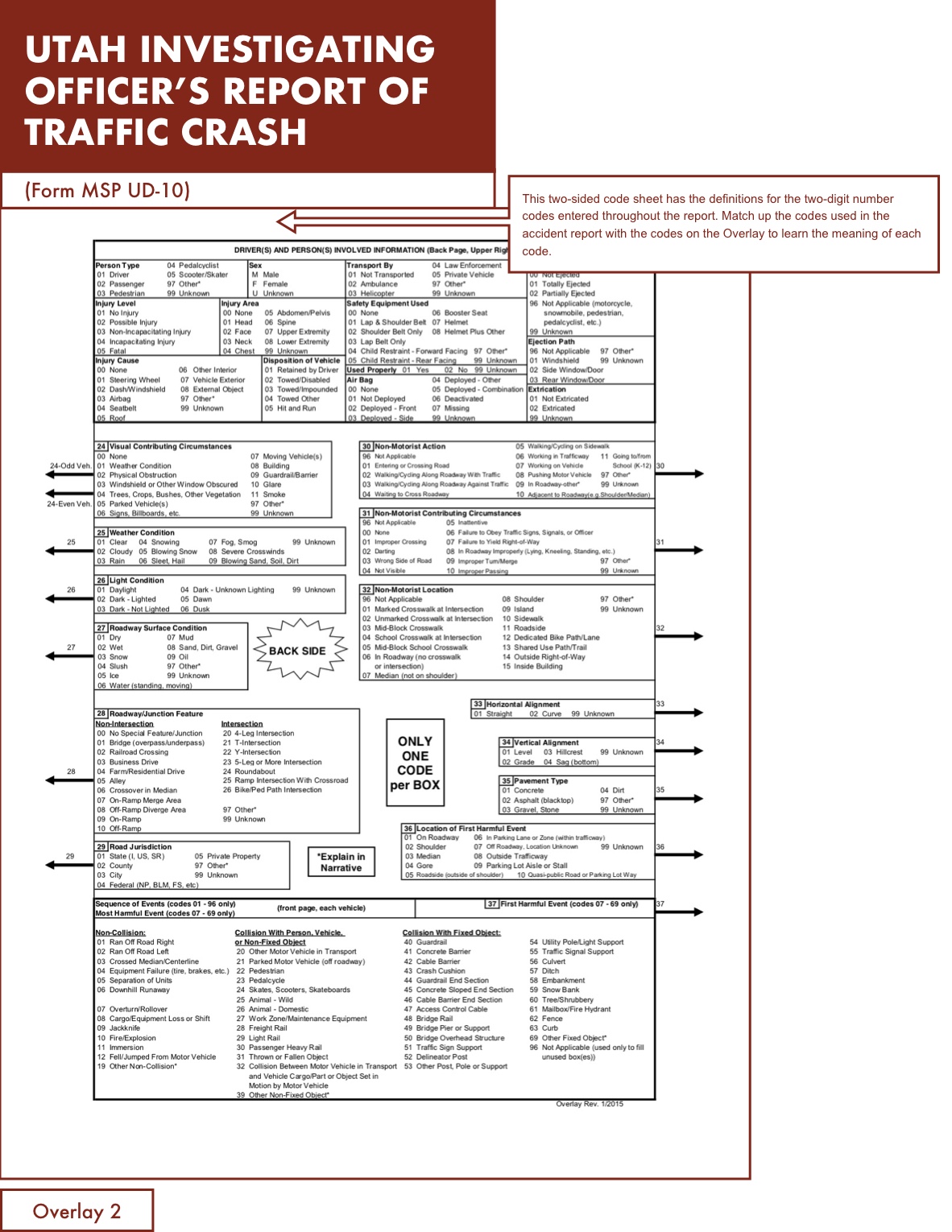In a divorce, the laws of equitable distribution distinguish marital property from separate property. Technically, only marital property, that is, proper...
If you get into a car accident in Utah that causes more than $1,000 of apparent property damage or results in someone’s injury or death, you are required to report the crash immediately to the nearest law enforcement agency. Ultimately, the investigating officer will generate an accident report that contains critical information about your collision and serves as a fundamental piece of evidence when trying to prove fault for a crash. Officially, this form is called the Utah Investigating Officer’s Report of Traffic Crash (DI-9 Report Form).
While Utah follows a no-fault system for car accidents, be mindful that you may file a personal injury lawsuit or third-party claim if your injuries meet certain conditions or if your damages exceed insurance policy limits. Furthermore, Utah is a modified comparative negligence state. As such, any compensation you recover will be reduced by your percentage of fault for the crash, up to 49%. If you are found to be 50% or more responsible for the accident, you aren’t allowed to recover compensation from another party involved in the collision. That means even just one error in your accident report has the potential to have a negative impact on your legal case.
After a car accident, you should always take time to carefully review your crash report. You may obtain a copy of your accident report from the Utah Department of Public Safety or by contacting the local law enforcement agency that responded to the collision. If you happen to find any mistakes in your accident report or disagree with the investigating officer’s assessment of how the crash occurred, contact a Utah car accident lawyer near you for help. An attorney can review the details of your case, explain your legal options, and take appropriate action to correct any errors in your accident report.
Utah Investigating Officer’s Report of Traffic Crash (DI-9 Report Form)
https://www.nhtsa.gov/sites/nhtsa.dot.gov/files/documents/utah_di-9_par_rev3_2006.pdf
https://www.nhtsa.gov/sites/nhtsa.dot.gov/files/documents/ut_di9overlay2015.pdf

Page 1
The numbered boxes that run vertically along the border of your accident report contain two-digit codes (see Page 1 of Overlay for definitions) to describe certain details about your crash. When there are two boxes stacked on top of each other that have the same number, the top box is designated for information about the “odd” vehicle and the bottom box for details about the “even” vehicle. The numbered boxes on this page are used to describe:
1. Crash Severity
2. Motor Vehicle Body Type
3. Trailing Unit(s)
4. Cargo Body Type
5. Special Function of Motor Vehicle
6. Area of Initial Impact
7. Most Damaged Area
8. Vehicle Deformity for Most Damaged Area
9. Alcohol/Drug Use Suspected
10. Alcohol/Drug Test Status
11. Test Results
12. Work Zone Type
13. Work Zone Location
14. Direction of Vehicle Travel
15. Vehicle Contributing Circumstances
16. Driver Condition
17. Driver Contributing Circumstances
18. Vehicle Maneuver
19. Driver Distraction
20. Traffic Control Device
21. Roadway Description
22. Manner of Collision (two or more motor vehicles)
23. Roadway Contributing Circumstances
Click here to download a printable PDF of How to Read Your Utah Accident Report.
Information about when your accident occurred is located at the top in the “Time” section.
The “Location” section is where you can find information about the scene of your crash. The two-digit number entered in the “County Code” box is defined in the upper right on Page 1 of the Overlay.
Beneath the “Location” section is where you will find information about the first vehicle (odd) and second vehicle (even) involved in the collision. This is where you can locate details about each vehicle (year, make, model, number of occupants, etc.); the name and contact information of the driver and the vehicle owner; if the driver was issued a citation; and insurance details.
If your accident involved a commercial vehicle, the “Commercial Vehicle Info” portion of the page will be completed by the investigating officer.
The codes used next to “Sequence of Events” and “Most Harmful Event for Vehicle” describe the circumstances of the crash, as they relate to each vehicle. These codes are explained at the bottom of Page 2 on the Overlay.
A description of any non-vehicle property damage (light pole, fence, guardrail, etc.) including an estimate of the damage is listed above the “Witnesses” section.
The last section of the page is where you can find the name and contact information of any eyewitnesses. Underneath are details about the law enforcement agency that responded to the collision and a place for the investigating officer to note if there were any pictures or video taken of the crash.
At the bottom of the page is where the investigating officer will check a box to indicate if the document is the first report filed (Original Report); there is a need to complete a form to list information about additional occupants and/or witnesses (Additional Persons Report); new information needs to be added to the report (Supplemental Report); or if the report has any corrections (Amended Report).

Page 2
The numbered boxes that run vertically along the border of your accident report contain two-digit codes (see Page 2 of Overlay for definitions) to describe certain details about your crash. When there are two boxes stacked on top of each other that have the same number, the top box is designated for information about the “odd” vehicle and the bottom box for details about the “even” vehicle. The numbered boxes on this page are used to describe:
24. Visual Contributing Circumstances
25. Weather Conditions
26. Lighting Conditions
27. Roadway Conditions
28. Roadway/Junction Feature
29. Road Jurisdiction
30. Non-Motorist Action
31. Non-Motorist Contributing Circumstances
32. Non-Motorist Location
33. Horizontal Alignment
34. Vertical Alignment
35. Pavement Type
36. Location of First Harmful Event
37. First Harmful Event
The upper left section defines the two-digit codes used to describe the seating position of each vehicle occupant before the collision occurred. Here you will also find information about Emergency Medical Services, such as the time EMS arrived at the crash scene.
Information about each driver, passenger, and non-motorist (e.g., pedestrian, bicyclist, etc.) is listed in the section labeled “Person(s) Involved.” This section will include the name and contact information of each person; the vehicle in which they were traveling; if they were transported to a medical facility; and the results of their Blood Alcohol Content (BAC) test (if applicable).
The two-digit codes used in the boxes under person type, sex, injury level, injury area, injury cause, transported by, safety equipment, used properly, air bag, ejection, ejection path, and extrication are defined at the top of Overlay Page 2.
A drawn diagram of the crash by the investigating officer is located in the middle of the page. This diagram should include an arrow in the circle to indicate which direction is North along with an illustration of every vehicle involved in the collision.
Underneath the crash diagram is the investigating officer’s written narrative describing what happened in your crash. Both the narrative and the crash diagram should be objective and based on factual information.
At the very bottom of the page are details about the investigating officer and supervisor who approved the prepared report.


Overlay (2 pages)
This two-sided code sheet has the definitions for the two-digit number codes entered throughout the report. Match up the codes used in the accident report with the codes on the Overlay to learn the meaning of each code.





